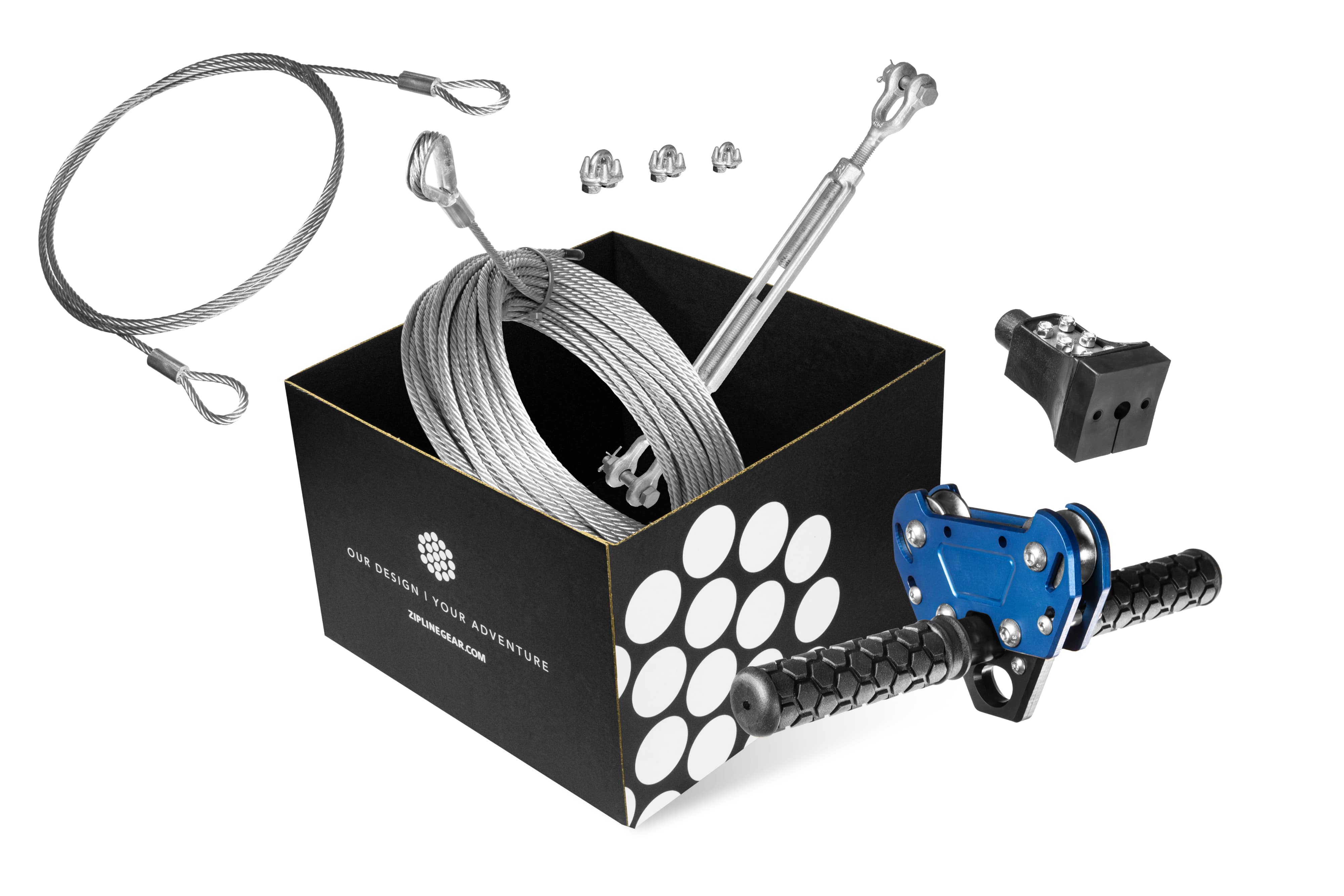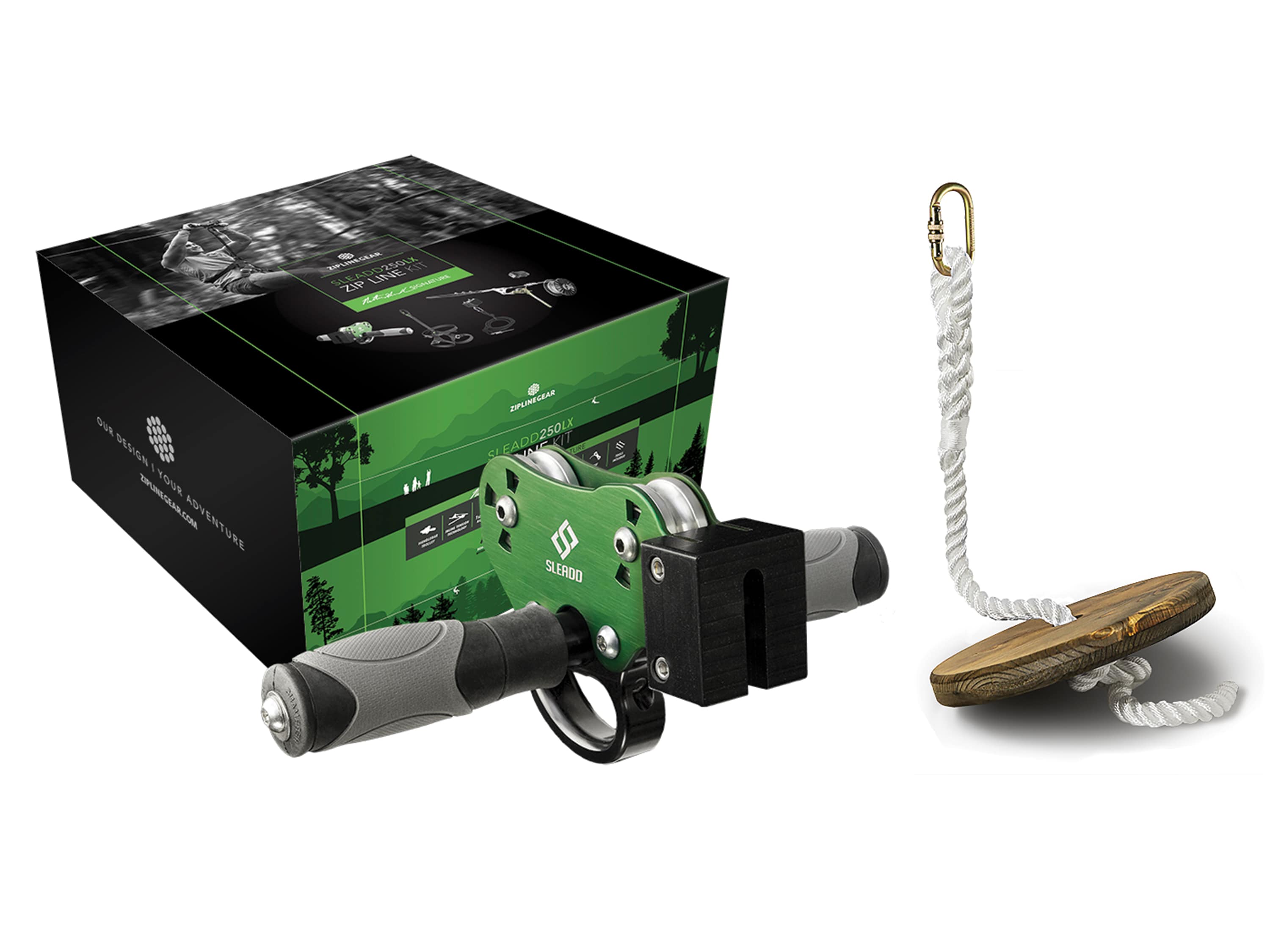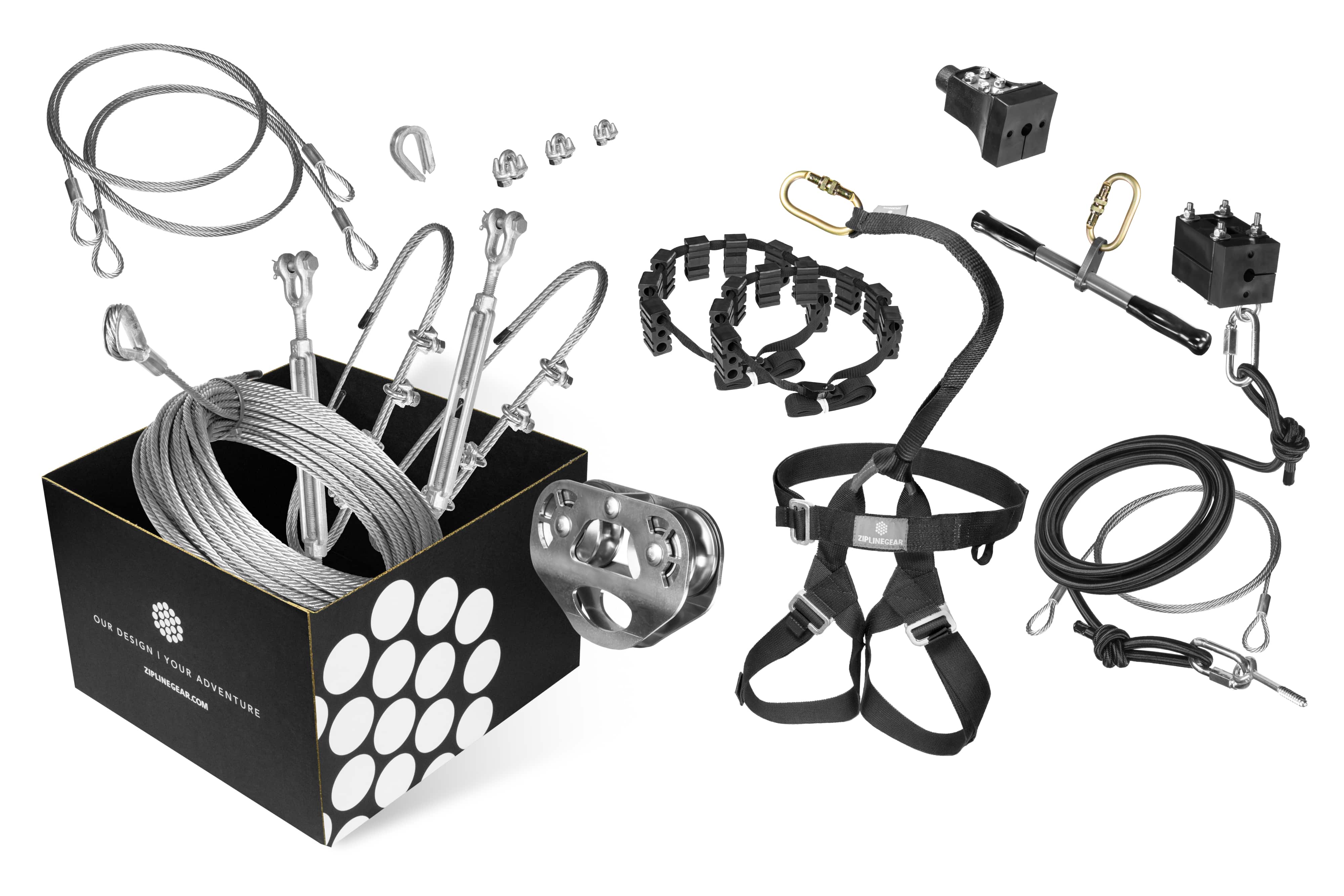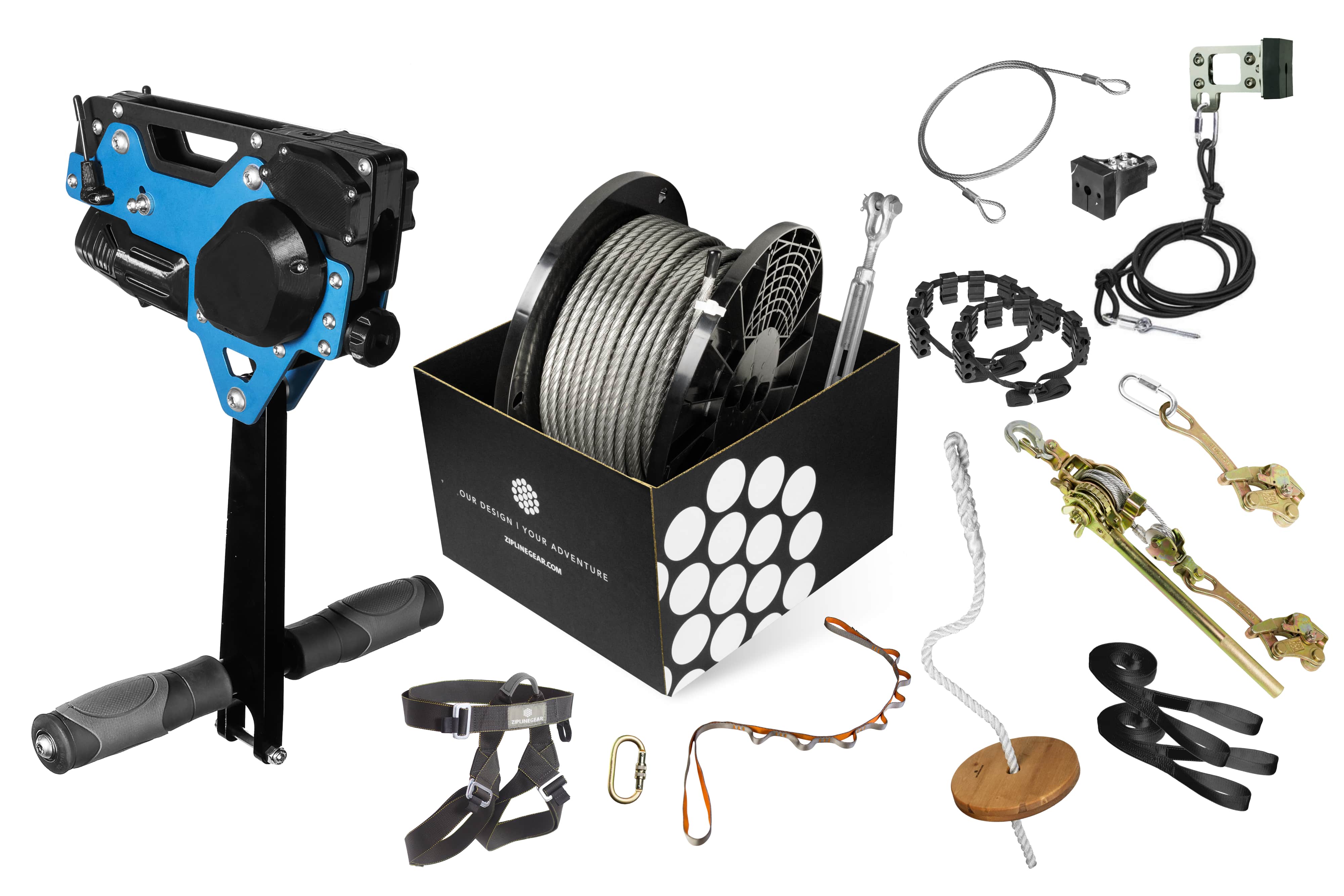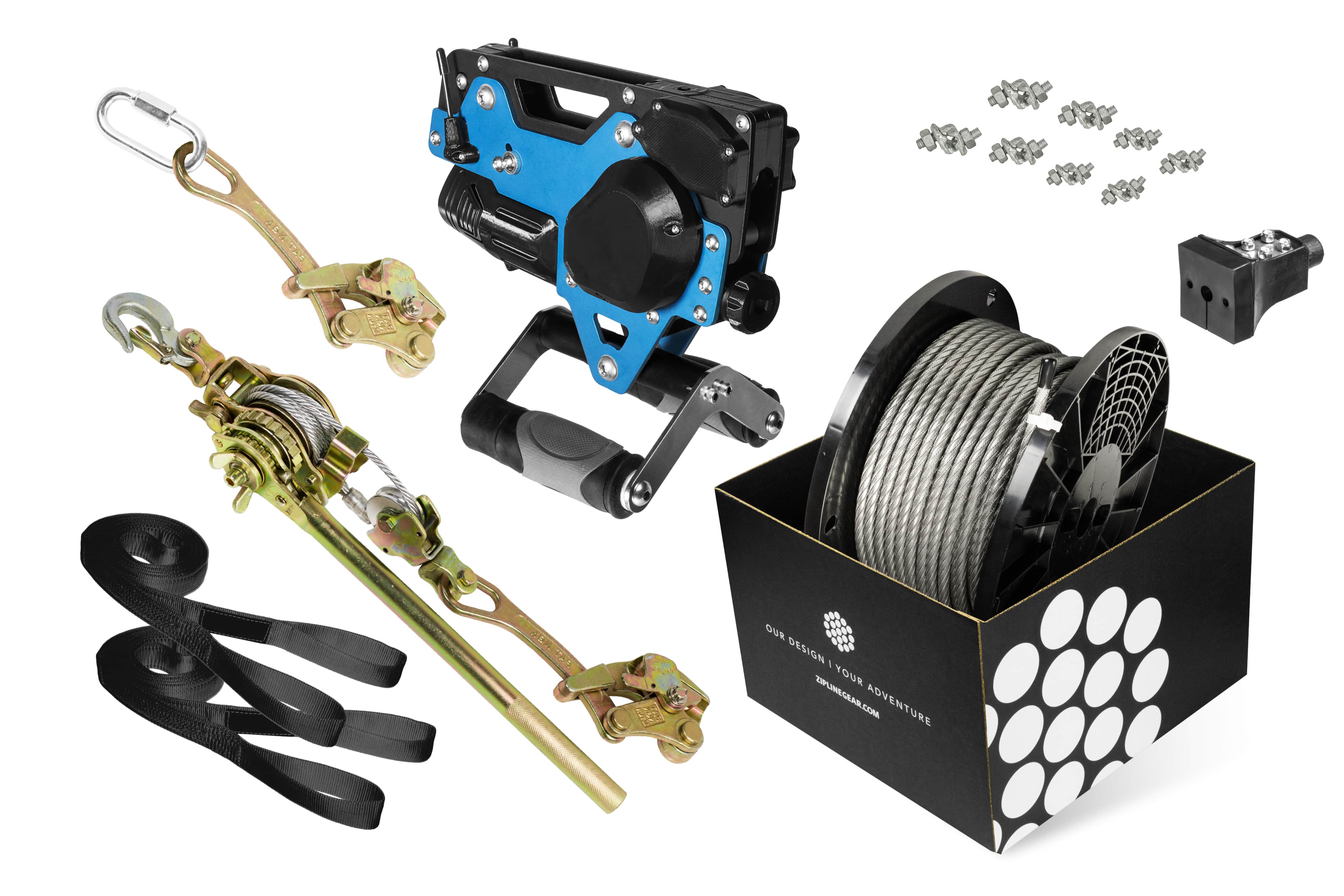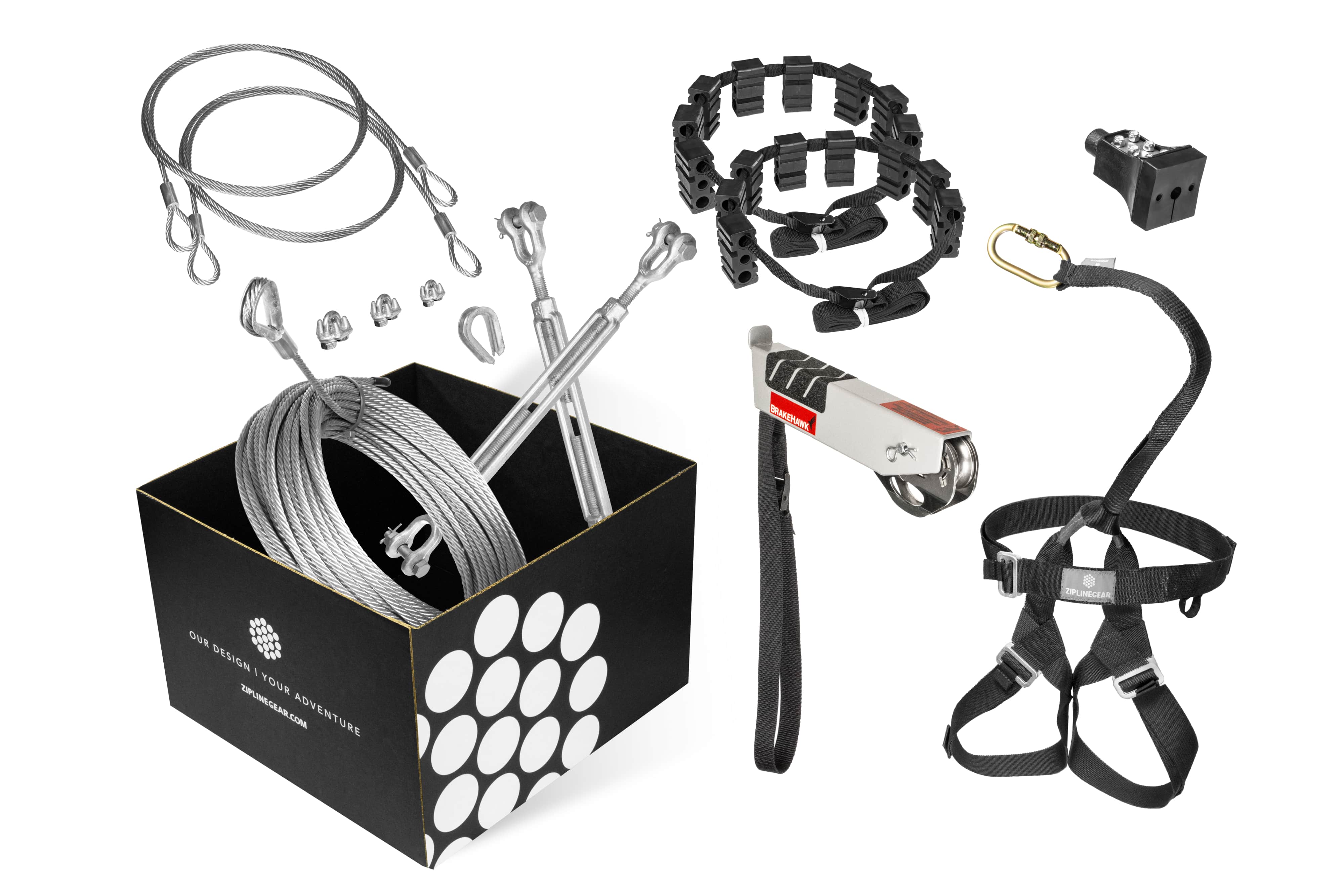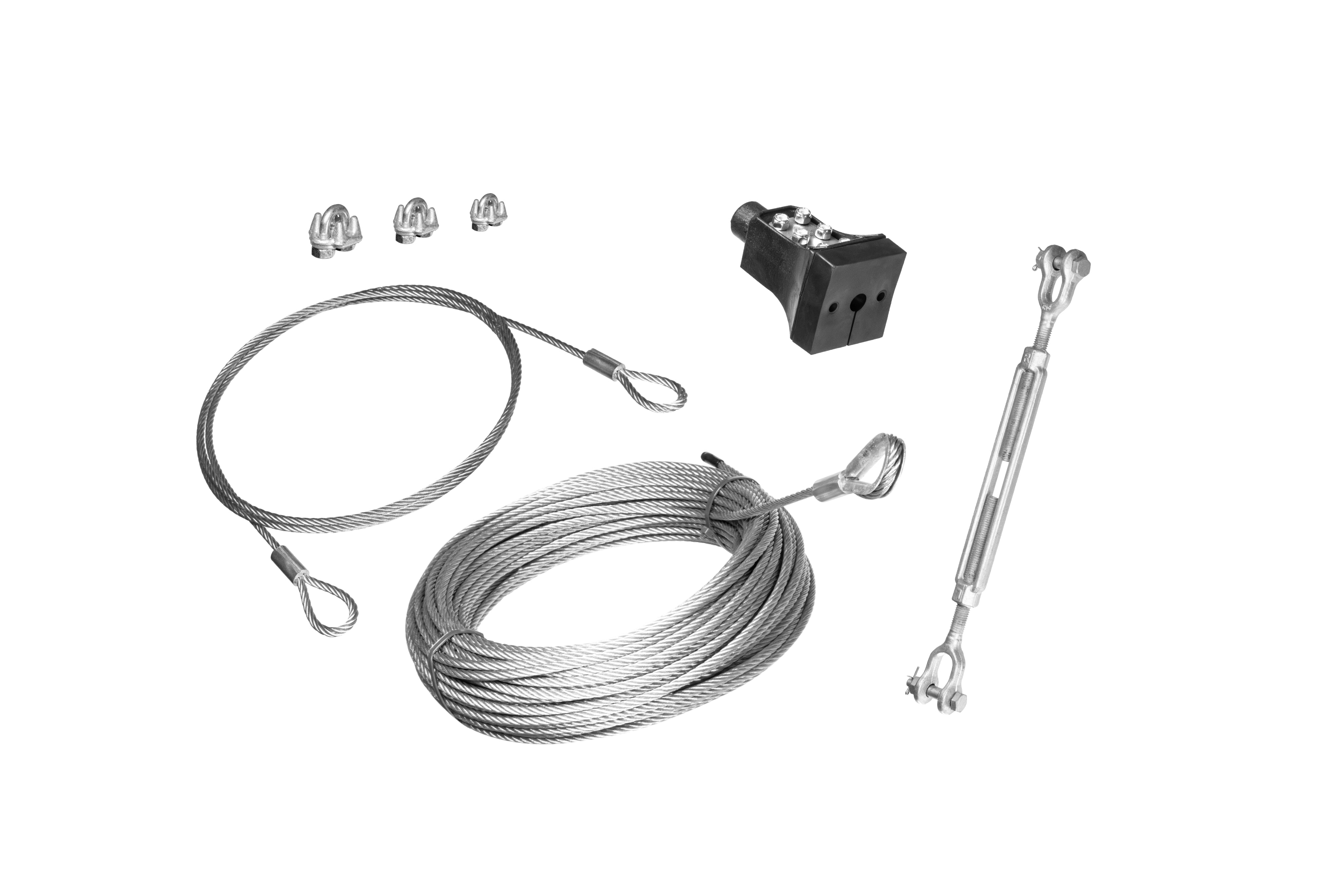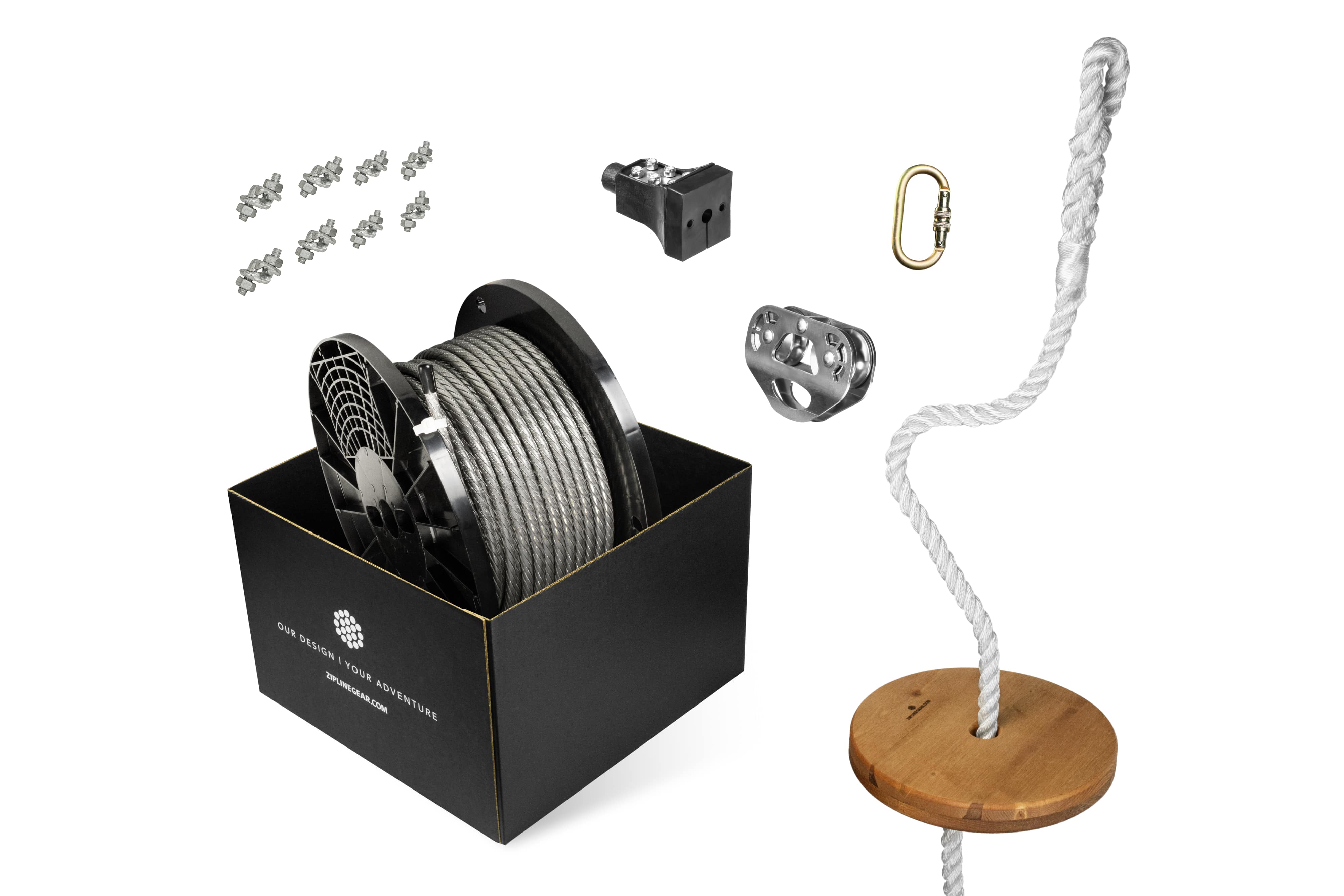Zip Line Gear FAQ
Frequently asked questions:
We are happy to accept returns up to 1 year from the date of purchase, no matter the condition. We want you to love your gear like we do, but we understand if you can’t. We still love you.
Include your name and order number on the inside of the package, so we know who to refund. Once your gear has been received, we'll refund your original purchase price. Return shipping is the customer's responsibility.
ZIPLINEGEAR
Attn: Returns Manager
903 NW F Street
Grants Pass, OR 97526
Stand at the end tree and hold a 4 FT Carpenter’s Level like a rifle. Holding one end up to your eye, point the opposite end at the base of the starting tree, right where the dirt and tree meet. Make sure the bubble is between the two hashes indicating level (crouch down if your yard has a minimal slope or climb a ladder if your yard has lots of slope).
Once you have the level aiming at the base of the starting tree, measure from the Carpenter’s Level down to the ground. This measurement is your natural elevation change.
The slope determines the speed of the zip line. Essentially this is the angle you set the cable at between the two trees. The slope is calculated by multiplying the distance between your trees times .03 or 3%.
More details on Slope can be found in the Zip Line Gear handbook included with your purchase. You can also view a digital version of the “Cable Slope & Sag” right here. We recommend finding a landscape with a natural slope of 3% to 6%, This is a 3 - 6 foot drop per 100 feet.
For zip lines that will NOT utilize a Bungee Brake System, (a Stop Block is NOT a braking system) the maximum allowable slope is 3%. For zip line setups that include a Bungee Brake, the maximum allowable slope is 6%.
!!WARNING!! Zip line must never exceed 6% (6 foot drop per 100 feet) riding slope. High speed collision with end point may cause injury or death.
The cable is never piano-string tight, there will always be a natural amount of sag in the cable. Sag is the amount the belly of the cable dips below your end anchor attachment point on the tree. This is important for two reasons: you never want your riders to bottom out, nor do you want the cable to be over tensioned or too tight.
Instructions for how to measure sag can be found in the Zip Line Gear handbook included with your purchase. You can also view a digital version of the “Cable Slope & Sag” section of the handbook right here.
Cable Tension is measured by Cable Sag:
The cable, when bearing a test weight, should sag below the end where the cable is attached.
The sag needs to be approximately 2% of the Zip Line’s total length. (2 feet per 100 feet of cable)
The sag is measured at the cables lowest point.
!! Warning!! Do not attempt to ride your zip line without first testing.
To figure out where to attach the cable to your trees you will use a combination of clearance, slope, sag and your natural elevation change. Here is the formula:
- Maintain at least a 7-foot clearance over the ENTIRETY of the zip line avenue while supporting the heaviest riders.
- Your attachment point at the end is clearance (7 ft) plus sag (2% of total zip line length).
- Your attachment point at the start will be the end anchor attachment point plus slope (3% of the length), minus any natural elevation change.
If you are in any doubt as to how to properly measure clearance, slope or sag, please contact us at 888-476-3701.
Instructions for how to measure can be found in the Zip Line Gear handbook included with your purchase. For more information on all three of these topics, you can view the digital version of our handbook, right here.
- Choosing a selection results in a full page refresh.
